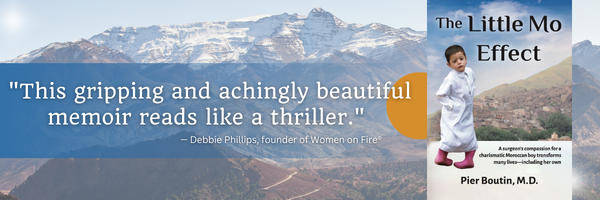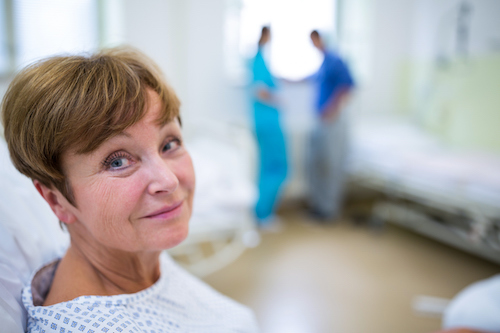In a world saturated by media messages, it can be difficult to sort out the good information about health from the bad. On a daily basis, we talk to women whose health choices have been led astray — sometimes greatly astray — by misinformation promoted as “health facts” in popular magazines, television shows, or on internet sites. Sometimes even their practitioners are steering them in unhealthy directions.

Women need good information to make good health choices, but too often we’re given enticing sound bites of advise that end up doing more harm than good. Women are sincerely trying to do all the right things for their bodies, but sometimes they are actually hurting their health in the process.
So what are these health myths? And how do they coax women into making poor health choices? We could list dozens, but let’s keep it simple: we’ll start with seven of the most widespread women’s health myths we hear in the media and from the women we talk to.
Health myth 1: Once you gain weight during menopause, you can’t lose it.
Let’s start off by saying that losing weight — before or after menopause — doesn’t automatically make us healthier. Lots of women believe that if they can just shed those extra pounds, it will solve all the other health issues they may have. But, for better or worse, this just isn’t so, particularly if your weight gain is related to an underlying hormonal imbalance to begin with.
Many women gain weight during menopause, and though a certain amount of weight gain is natural as women pass this milestone, it certainly doesn’t have to be permanent. In our reproductive years, our bodies are biologically equipped with enough estrogen to facilitate procreation. When we enter perimenopause and estrogen from the ovaries declines, the body is programmed to protect itself from an abrupt transition in a couple of ways. One of these natural mechanisms is by storing more fat. Fat cells provide another source of estrogen in our bodies, particularly after menopause. Once the body has adjusted to less estrogen, oftentimes weight goes down again.
But menopause is not just about changes in estrogen. Another way our bodies are cushioned during the switch from reproductive mode toward healthy aging involves the adrenal glands. As ovarian hormone production winds down in midlife, the adrenals contribute small, yet significant amounts of estrogen and other sex hormones. This buffer provided by the adrenals is compromised by chronic stress, which causes the adrenals to expend themselves on cortisol production, leaving less reserve for manufacturing sex hormones. Studies suggest that over time, this “cortisol dominance” leads to deposition of fat in the abdominal area, which in turn deranges hormonal balance even further. So both estrogen and cortisol can influence the way the body stores fat.
Everywhere we look, our hormonal pathways are intimately connected, and when one is out of balance it has a cascading effect on others. This helps explain why weight gain can be caused by imbalances in estrogen, testosterone, progesterone, cortisol, insulin, hGH and DHEA — all of which work together to regulate your metabolism and appetite.
The good news is that regardless of your age, if you provide your body with the support it needs, you can certainly avoid or reverse the hormonal imbalance that drives unwanted weight gain — and one of the best ways to do this is through nutrition. Conventional medicine and the media have long overlooked the fact that nutrition, in the form of a balanced diet, is essential to hormonal balance. When women follow a Mediterranean-style diet — which includes cutting back on refined carbohydrates and increasing quality fats — they often have great results. Our Nutritional and Lifestyle Guidelines have helped many women resolve the problem of unwanted weight gain and maintain wellness through menopause and beyond.
It is very normal for a woman to have shifts in her weight during menopause, but it doesn’t have to be a long-term change. For more information about gaining and losing weight at menopause, see our article on menopausal weight gain. You might also find Dr. Pamela Peeke’s books helpful. She has dedicated her career to disproving the myth that women can’t lose weight after menopause. Check out her website for more information on her Body-for-Life books and programs.
Health myth 2: If you eat a low-fat, low-calorie diet, you will lose weight.
When it comes to reaching a healthy weight, restricting calories may be a quick fix for some women, but it is not the long-term answer. The key factor in weight loss is not what we eat, but how we metabolize our food. For much of human evolution, food was scarce. So our bodies evolved to metabolize food slowly, conserving fat for our bodies to use as an energy source in periods of starvation. Slow metabolism and the ability to store fat was an evolutionary advantage, as was the body’s ability to respond to starvation by slowing its metabolism still more in lean times. Though we rarely suffer long bouts of starvation anymore, some women still have these evolutionary responses. So when you cut calories, your body — still conditioned by evolution to guard against starvation — may respond by slowing food metabolism, which makes it more difficult to lose weight.
We’ve worked with many women to help them understand that a sluggish metabolism can lie at the root of an inability to lose weight. For lots of people, increasing or adding exercise can help increase metabolism. But our bodies are amazingly complex, and there are other imbalances — often hidden below the surface — that can bring down metabolism. Here are some you may not hear about:
- Over-worked adrenal glands
- Thyroid imbalance
- Insulin resistance
- Toxic overload
- Food sensitivities
Any of these imbalances can affect the way the body metabolizes food and stores fat. There are so many different physical issues that affect weight loss, and it can be overwhelming. Don’t get discouraged. We’ve written about these issues in other areas of our website and will continue to help women understand how the interconnection of our body’s systems balance weight. So feel free to explore and stay tuned for more to come.
Health myth 3: If you eat well, you don’t need a multivitamin.
In an ideal world, everything we put into our bodies would nourish us and provide the perfect balance of vitamins, minerals and antioxidants. The reality is that the world we live in today is far from perfect. As medical anthropologist and certified nutritionist Dr. Susan Brown writes in her book Better Bones, Better Body:
As citizens of a contemporary American society we are living a vast experiment. Never before have humans been so physically inactive, eaten so much processed food, spent so much time indoors under artificial lighting, taken so many drugs and medications, undergone so many surgical procedures or exposed themselves to such a vast array of chemical, electromagnetic, and informational pollution.
Our bodies are continually faced with toxins, free radicals, radiation and heavy metals. Even if we ate whole foods all the time, we’d still be exposed to pesticides, hormones and chemicals. The bottom line is, the better you cover your nutritional bases, the better you can meet your body’s basic needs and bring it back to a healthy balance. Every cell in our bodies relies on micronutrients to function properly. The least we can do for ourselves is take a top-quality multivitamin-mineral complex. Choosing a vitamin-mineral that is fully bioavailable to your body is also important. To learn more about vitamins and women’s health, see our article on choosing the best multivitamin.
Health myth 4: As you age, your body requires less sleep.
Yes, it’s true that our sleep changes as we get older, but it’s not true that we need less of it. According to the American Academy of Family Physicians, “Most of us require about eight hours of sleep at night to feel fully alert when we’re awake.” You may realize that you’re not getting a solid chunk of sleep like you used to — many of my patients complain that they are more easily woken from sleep or that it is more difficult to get to sleep than when they were younger — but this doesn’t mean you don’t need the hours.
Waking more easily can be due to natural changes in your sleep cycle pattern. After around the age of 50, we begin to spend less time in the deeper phases of the sleep cycle and more time in stages I and II, which are lighter and may leave us more susceptible to disturbances throughout the night.
Tips for good sleep hygiene
Many things we do before bedtime can raise our cortisol levels, disrupting sleep patterns. Here are some suggestions to consider. For a more lengthy discussion on sleep, see our article on insomnia.
- Exercise as early in the day as possible, rather than in the evening.
- Enjoy your last meal of the day well before going to bed. (Eating bumps up cortisol, too!)
- Try not to use your computer after 8:00 PM.
- Avoid violent or disturbing books, television or movies before bed.
- Steer clear of family upsets and finances before bed.
- Before resting, take a moment to write down any thoughts that keep you from feeling at peace.
Sleep disturbances in women can stem from a wide variety of factors, such as daily stress, a partner who snores, stimulating activities before bed, drinking or snacking late in the day. Or, you may have pain, hot flashes, anxiety or some other internal imbalance disrupting your sleep. As we age, we are also more prone to sleep apnea, restless leg syndrome, or side effects to medications that can disturb sleep. Good sleep depends on many things, and one simple place to start is by looking at the amount of artificial light you’re surrounded by before bed.
When it’s dark, a part of our brains known as the suprachiasmatic nucleus (SCN) lowers body temperature and prompts the release of melatonin. Melatonin is the hormone that helps our bodies prepare for sleep, while cortisol is the hormone released when we are exposed to light. In the presence of light — natural or artificial — the SCN increases the body’s temperature and sends a message to the adrenals to release cortisol. Cortisol, also released in response to stress, is one of the hormones that tell our bodies that it is time to be alert.
In the past, we worked until the sun went down and rested when it was dark. Our modern lifestyles allow us to work, play and be awake at any hour — day or night. Of course, this is convenient, but it comes at a cost to our sleep patterns. For women who are having trouble with sleep, be sure you allow time in dim light or darkness to give the brain a chance to move into sleep mode.
You may also find it helpful to keep a pen and paper near the bed so you can write down the thoughts keeping you awake. Writing down the thoughts gives you the freedom to let go of concerns for the time being.
Health myth 5: Sex drive decreases with age.
Many women report that sex gets more enjoyable as they age. But sometimes the hormonal fluctuations that occur during and leading up to menopause can make sex one of the last things on your mind, leading lots of women to fear that it will only get worse as they age. Fortunately, decreased sex drive is often a temporary situation.
As we approach menopause, all three of the major sex hormones — estrogen, progesterone and testosterone — can be out of balance. Testosterone is the primary hormone related to the libido. So if you experience the very real and natural hormonal imbalance that occurs during menopause, it isn’t surprising that your libido may suffer. To learn more about the physical causes and solutions of a low libido, see our article on low sex drive in women.
The physical problems related to sex, such as pain and vaginal dryness — once pinpointed — are relatively easy to solve, but what’s often more difficult to address are our emotions around sex. Whether you’ve grown apart from your partner, feel unattractive because of hot flashes, mood swings or little sleep, or something else entirely, sex can feel like an enormous chore — and women may say, Oh well, it’s just a fact of life. The older I get, the less I want sex.
Sex drive is so complicated, and there are lots of issues related to the psychology of sex that come up as we age. One aspect of sex many people underestimate is that women have biological differences from men in the ways they are turned on. Women’s brains are much more responsive to communication and connection. They often find it easier to engage in sexual thinking when they connect with their partners conversationally. When partners ask, How are you today? How was your day? and truly listen to the response, it’s much easier to feel connected. As many of us have figured out by now, most women need time — with conversation as well as foreplay — to become fully aroused.
It’s also extremely difficult to enjoy sex when we don’t feel sexy. And it’s hard to think of ourselves as sexual beings after a stressful day of work or a night without sleep — not to mention being constantly bombarded by images of teens as the standard of sexual desirability. A woman’s desire for sex is rooted in how connected she is to her own sensuality. Once we take time to rekindle our enjoyment of sensual pleasures, it becomes much easier to engage in sexual relations.
Health myth 6: Statin drugs are the best way to control high cholesterol levels.
Many women are fearful of high cholesterol levels and the risk of heart disease. It’s true that heart disease is a very real concern for women as they age, and lowering LDL (“bad”) cholesterol is one way to lower risk. But going on a prescription statin for life is certainly not the only way to bring LDL cholesterol down, and it may not be the best way to reduce risk in women with no prior history of heart disease. The statin drug ads in magazines downplay the fact that there are other, natural ways to keep your lipid profile at healthy levels.
First it’s important to understand that cholesterol is not the enemy. Without cholesterol our bodies would not function. We need cholesterol for cell membrane health, memory and neurological and brain function. Equally important is the fact that cholesterol is the precursor to all of our sex hormones. So women who’ve worked hard to incorporate low-fat, low-cholesterol diets in an effort to be healthy, may actually be doing more harm than good.
Statin drugs work by inhibiting an enzyme known as HMG-CoA reductase, which controls the rate of cholesterol production and LDL clearance in our bodies. The downside is that inhibition of cholesterol can bring about many side effects, including muscle pain and weakness, and more dangerous kidney damage and deterioration of fine motor skills and brain function.
What’s more, some scientists question the effectiveness of pharmaceutical statins on patients who don’t have heart disease, particularly women. In analyzing the evidence from years of trials with statins, they have found that only 1 in 100 people is likely to benefit. For women with no prior history of heart disease, hypertension, or smoking, this number — sometimes called the “number needed to treat” (NNT) — may be much lower!
Supplements like red yeast rice and fish oil can work effectively as natural statins — without the side effect profile of pharmaceutical versions. If you must be on a statin drug, consider supplementing with natural coenzyme Q10 (which is inhibited with the use of statin drugs, sometimes leading to muscle pain) and red yeast rice. (Please do this under the guidance of a qualified practitioner of functional medicine or Traditional Oriental Medicine.)
Our bodies function best when cholesterol is at a healthy balance, and an improved lipid profile can best be achieved naturally. The place to start is with your diet. Eliminating processed and refined ingredients (including trans fats as well as fat “substitutes” high in corn syrup and other chemicals), limiting carbohydrates, eating fresh whole foods from the source as much as possible, and getting adequate amounts of healthy fat are ways to lower and maintain balanced cholesterol levels.
By eating real cholesterol and healthy oils, you can naturally regulate insulin levels and trigger enzymes that convert food into energy. Cholesterol from food has the ability to regulate your body’s internal cholesterol production. Be mindful of the kinds of fat and cholesterol you eat. Especially for those with a strong family history of high cholesterol, we suggest limiting saturated fats.
Health myth 7: You need to exercise 30–60 minutes per day to have any impact on health.
We know firsthand how difficult it is to find the time to exercise. It’s one of those things that always slides to the bottom of the list whenever something else comes up. And it can seem nearly impossible to carve out an hour for exercise. But over and over we hear how getting at least 30 minutes a day of exercise is crucial to a woman’s health.
That’s just not so. “Bursting” is an exercise method where you quickly and repeatedly bringing your body to an extreme and back again — to the point where you’re breathing so heavily, you might not be able to talk. If you exercise in bursts, you may not require more than 20 minutes three to four times a week to improve your health. No matter how busy you are or what sort of shape you are in, you can benefit from this time-efficient method — as long as you keep at it regularly.
Studies on various patterns of bursting show significant health benefits from many diverse timing regimes, so don’t worry too much about checking heart rate monitors or other gadgets. Just start by pushing yourself to your natural limit and staying there for one minute. And if you can’t make it the full minute, that’s fine too! Start by bursting for 20 or 30 seconds at a time, and build up to the minute mark slowly.
As humans, we are meant to move, and whatever way you choose to do it works with the bursting concept. If it’s cross-country skiing, dance, yoga, walking, swimming or something else — you don’t have to go to a gym to build strength or increase your metabolism. The most important thing is that you get to the place where you’re breathing and moving your body at peak intensity.
Bursting is also beneficial for the prevention of osteoporosis. Studies show that when the body is brought to its limit in unexpected short bursts rather than long-term routine loading, it stimulates the bone-building cells in your body to make more bone.
If you can burst four times during a 20-minute work-out you’ll trigger a whole cascade of positive metabolic changes that improve your lipid profile, muscle volume, and respiratory capacity — which is the best way to ensure long-lasting weight loss and optimal health. If you absolutely can’t find 20 minutes to exercise, try doing a minute-long burst four to five times throughout the day. The key is to listen to your body, remembering to factor in your condition, to burst within your limits, and to build on that capacity. This way you can learn what your body is capable of, and what it needs to do, to stay fit over time.
Truth about women’s health begins with you
With so much coming at us on a daily basis about what is healthy and unhealthy, it’s easy to lose track of our own instincts. Everything you read, see or hear passes through your personal filters — and we want to remind you to trust those filters. Listen closely to what feels right for you, and don’t be afraid to do something against the grain if that is what your body desires. You have the wisdom to find your own best way to health. We are here, if you need a hand along the way.
1 Mayo Clinic staff. 2006. Weight gain after menopause: Reverse the middle age spread. URL: https://www.mayoclinic.com/print/menopause-weight-gain/HQ01076/METHOD=print (accessed 12.12.2007).
2 Genazzani, A., & Gambacciani, M. 2006. Effect of climacteric transition and hormone replacement therapy on body weight and body fat distribution. Gynecol. Endocrinol., 22 (3), 145–150. URL (abstract): https://www.ncbi.nlm.nih.gov/pubmed/16835076 (accessed 03.18.2008).
Peeke, P. 2001. https://www.amazon.com/exec/obidos/ASIN/014100181X Fight Fat After Forty: The Revolutionary Three-Pronged Approach That Will Break Your Stress-Fat Cycle and Make You Healthy, Fit, and Trim for Life, 38. NY: Penguin.
3 Wilson, J. 2000. https://www.amazon.com/exec/obidos/ASIN/1890572152 Adrenal Fatigue: The 21st Century Stress Syndrome, 261. Petaluma, CA: Smart Publications.
4 Kyrou, I., & Tsigos, C. 2007. Stress mechanisms and metabolic complications. Horm. Metab. Res., 39 (6), 430–438. URL (abstract): https://www.ncbi.nlm.nih.gov/pubmed/17578760 (accessed 02.29.2008).
Kyrou, I., et al. 2006. Stress, visceral obesity, and metabolic complications. Ann. N.Y. Acad. Sci., 1083, 77–110. URL: https://www.ncbi.nlm.nih.gov/pubmed/17148735 (accessed 02.29.2008).
Epel, E., et al. 2000. Stress and body shape: Stress-induced cortisol secretion is consistently greater among women with central fat. Psychosom. Med. 62 (5), 623–632. URL (full text): https://www.psychosomaticmedicine.org/cgi/content/full/62/5/623 (accessed 02.29.2008).
Peeke P., & Chrousos, G. 1995. Hypercortisolism and obesity. Ann. N.Y. Acad. Sci., 771, 665–676. URL (abstract):https://www.ncbi.nlm.nih.gov/pubmed/8597440 (accessed 02.29.2008).
5 Brown, S. 2000. https://www.amazon.com/exec/obidos/ASIN/0658002899 Better Bones, Better Body, 141. Lincolnwood, IL: Keats Publishing.
6 Eichling, P. “Sleep: Missed assessments, underutilized strategies.” 21st Century Endocrinology, Thyroid and Adrenal as Sentinel Organs. IFM 14th International Symposium, 05/25/2007, Tucson, AZ.
American Academy of Family Physicians. 1999. Are you having trouble sleeping as you grow older? Am. Fam. Phys., 59 (9). URL: https://www.aafp.org/afp/990501ap/990501d.html (accessed 02.29.2008).
7 Neubauer, D. 1999. Sleep problems in the elderly. Am. Fam. Phys., 59 (9). URL: https://www.aafp.org/afp/990501ap/2551.html (accessed 02.22.2008).
See also:
Insomnia: Causes. 2007. Mayo Clinic. URL: https://www.mayoclinic.com/health/insomnia/DS00187/DSECTION=3 (accessed 02.21.2008).
8 Kolata, G. 2007. The elderly always sleep worse, and other myths of aging. Aging – Sleep problems – Health – New York Times. URL: https://www.nytimes.com/2007/10/23/health/23age.html (accessed 03.18.2008).
9 Elias, M. 2007. Study: Grandma’s got her groove on. URL: https://www.usatoday.com/news/health/2007-11-18-women-sex_N.htm (accessed 02.22.2008). [Source: Natalia Gavrilova of the National Opinion Research Center at University of Chicago.]
10 Nissen, S., et al. 2006. Effect of very high-intensity statin therapy on regression of coronary atherosclerosis: The ASTEROID trial. JAMA, 295 (13), 1556–1565. URL (full text): https://jama.ama-assn.org/cgi/content/full/295/13/1556 (accessed 02.22.2008).
11 Wikipedia.org. 2008. Statin. URL: https://en.wikipedia.org/wiki/Statin#Adverse_effects (accessed 02.22.2008).
12 Carey, J. 2008. Do cholesterol drugs do any good? BusinessWeek. January 17. URL (full text): https://www.businessweek.com/print/magazine/content/08_04/b4068052092994.htm (accessed 03.14.2008).
13 Huang, C., et al. 2007. Efficacy of Monascus purpureus Went rice on lowering lipid ratios in hypercholesterolemic patients. Eur. J. Cardiovasc. Prev. Rehabil., 14 (3), 438–440. URL (abstract): https://www.ncbi.nlm.nih.gov/pubmed/17568245 (accessed 02.29.2008).
Liu, J., et al. 2006. Chinese red yeast rice (Monascus purpureus) for primary hyperlipidemia: A meta-analysis of randomized controlled trials. Chin. Med., 1 (1), 4. URL (full text): https://www.cmjournal.org/content/1/1/4 (accessed 02.29.2008).
Natural Standard Research Collaboration. 2006. MedlinePlus herbs and supplements: Red yeast rice (Monascus purpureus). URL: https://www.nlm.nih.gov/medlineplus/druginfo/natural/patient-redyeast.html (accessed 02.22.2008).
Lin, C–C., et al. 2005. Efficacy and safety of Monascus purpureus Went rice in subjects with hyperlipidemia. Eur. J. Endocrin., 153 (5), 679–686. URL (full text): https://eje-online.org/cgi/content/full/153/5/679 (accessed 02.29.2008).
Wang, J., et al. 1997. Multicenter clinical trial of serum lipid-lowering effects of a Monascus purpureus (red yeast) rice preparation from traditional Chinese medicine. Curr. Ther. Res., 58 (12), 964-978.
14 American Council on Exercise. 2002. American Council on Exercise recommends 60 minutes of physical activity a day. URL: https://www.fun-fit-facts.org/media/media_display/?NewsID=143 (accessed 12.12.2007).
Mercola, J. 2005. Want to lose weight? Then exercise 60–90 minutes every day. URL: https://www.mercola.com/2005/feb/5/weight_loss_exercise.htm (accessed 12.12.2007).
See also:
https://www.cancer.org/docroot/CRI/content/CRI_2_2_2X_What_causes_breast_cancer_5.asp?sitearea
https://www.cancer.org/docroot/NWS/content/NWS_1_1x_Watch_Your_Waistline_to_Ward_Off_Cancer.asp
https://www.nlm.nih.gov/medlineplus/ency/article/000726.htm
https://www.americanheart.org/downloadable/heart/110158662873730%20WhyShldIBePhyllyActve.pdf
15 Burgomaster, K., et al. 2007. Similar metabolic adaptations during exercise after low volume sprint interval and traditional endurance training in humans. J. Phys., 586 (1), 151–160. URL: https://www.ncbi.nlm.nih.gov/pubmed/17991697 (accessed 12.12.2007).
Altena, T., et al. 2006. Lipoprotein subfraction changes after continuous or intermittent exercise training. Med. Sci. Sports Exerc., 38 (2), 367–372. URL: https://www.ncbi.nlm.nih.gov/pubmed/16531908 (accessed 12.12.2007).
16 Lanyon, L. 1993. “Skeletal Responses to Physical Loading.” In Physiology and Pharmacology of Bone, Eds. Gregory R. Mundy & John T. Martin, 485–505. Berlin: Springer-Verlag.
17 Seven, R. 2006. Burst into shape: Short on time or not, quick bouts of exercise look like the way to go. URL: https://seattletimes.nwsource.com/html/pacificnw02262006/onfitness.html (accessed 12.12.2007).










